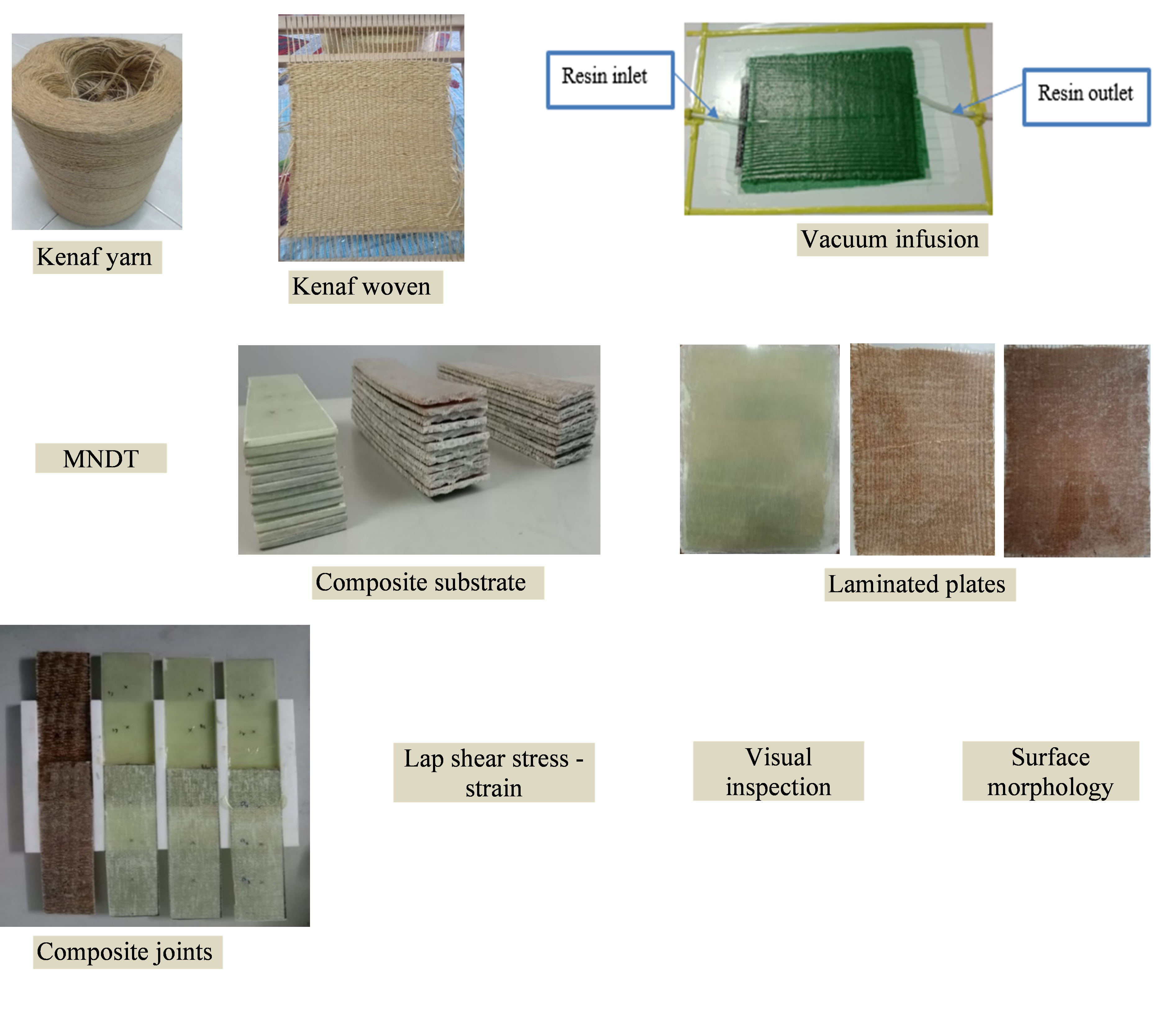Correlative Investigation on Dielectric-Mechanical-Morphological Characteristic for Kenaf-Glass-Hybrid Fibers Reinforced Epoxy Composite
DOI:
https://doi.org/10.37934/aram.121.1.135145Keywords:
Glass fibre, kenaf fibre, dielectric constant, loss factorAbstract
In recent years, there are many applications where synthetic fibers and natural fibers are used as reinforcing materials in composites, such as the automotive and aerospace industries, the medical industry, and the construction industry. While these hybrid fibers effectively enhance mechanical and electrical properties, research into electrical characteristics remains inadequate and is an ongoing endeavor. In this work, synthetic woven glass fibers and natural woven kenaf fibers were used to fabricate composite materials by vacuum infusion technique. The dielectric properties of three different substrates, glass fibers, kenaf fibers and glass/kenaf fibers reinforced epoxy composites were investigated at 0° orientation. The ENA Network Analyzer was used to measure dielectric properties in a wide microwave frequency range. The substrates were single-joint overlapped with an adhesive and then mechanically tested. The shear strength of the joint as a function of strain, was tested using a Shimadzu universal testing machine. Visual inspections were performed to determine the failure modes of the composites. The dielectric constant and loss factor of the glass fiber composite were the highest, while the kenaf fiber composite had the lowest value. When a small amount of glass fibers is incorporated into kenaf fibers, which is called a hybrid composite, the polarization increases and the mechanical strength also increases compared to the kenaf fiber composite. Scanning electron microscopy (SEM) of the fractured tensile tests was performed to understand the nature of the interfaces between glass, kenaf and matrix. The kenaf/matrix interface was heterogeneous but exhibited voids, resulting in low dielectric properties and mechanical strength. By inserting a small amount of glass fibers, the hybrid with kenaf fibers improve the dielectric constant by 20.7% and the dielectric loss factor by 27% compared with the kenaf fiber composite. The results also show that the composites exhibit a correlation between the dielectric properties, tensile strength, and the morphological nature of the interfaces.
Downloads



























